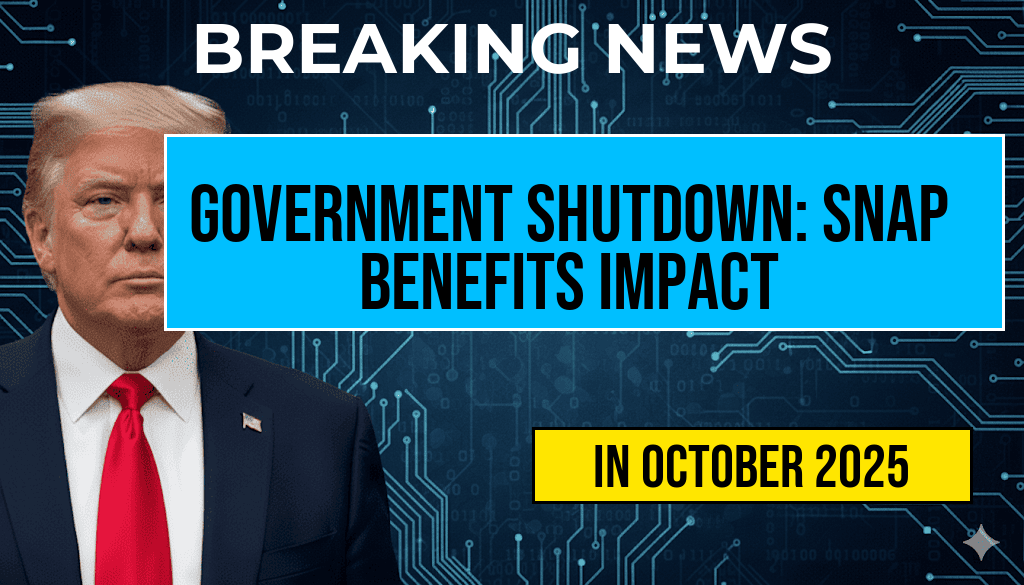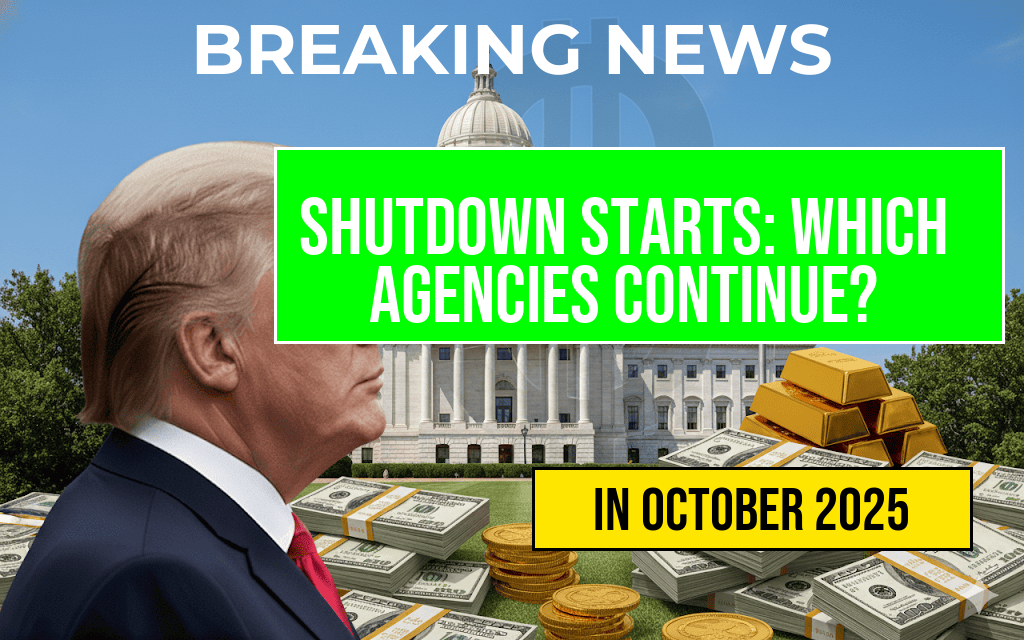The impending threat of a government shutdown has raised significant concerns about the continuity of social assistance programs, particularly the Supplemental Nutrition Assistance Program (SNAP), commonly known as food stamps. If Congress fails to reach a funding agreement before a shutdown occurs, millions of Americans relying on SNAP benefits could face disruptions or reductions. While some essential services may continue temporarily, the Department of Agriculture (USDA), which administers SNAP, has warned that a lapse in funding could lead to delays in benefit issuance, suspension of new applications, and potential cuts in benefits for recipients. This uncertainty underscores the broader implications of federal budget standoffs on vulnerable populations, especially during economic downturns or rising food insecurity. As negotiations continue, stakeholders are closely monitoring developments to assess how specific SNAP operations and benefits might be affected in the coming weeks.
Understanding the Potential Impact of a Government Shutdown on SNAP
Funding Mechanisms and Agency Operations
The SNAP program is primarily funded through federal appropriations authorized by Congress. Under normal circumstances, the USDA allocates funds on a monthly basis, ensuring beneficiaries receive their benefits through Electronic Benefit Transfer (EBT) cards. However, in the event of a government shutdown, the availability of federal funds becomes uncertain. According to the USDA, essential services related to SNAP, such as benefit distribution, typically continue during brief shutdowns, as they are considered mandatory spending. Nonetheless, longer shutdowns may disrupt operations, leading to delays in processing applications, re-certifications, or issuance of benefits.
Potential Changes to Benefits and Access
While existing recipients might retain their benefits temporarily, federal agencies have indicated that new applications or recertifications could face delays or suspension. This could cause some households to experience a lapse in benefits, especially if reauthorization is not enacted swiftly. Moreover, states that administer SNAP locally could encounter logistical challenges, including staffing shortages and administrative delays, further impacting service delivery.
Policy Responses and Legislative Measures
Congressional Actions and Emergency Funding
Historically, Congress has sometimes approved emergency funding or temporary measures to prevent disruptions to social programs during shutdowns. Legislation may be introduced to provide interim funding specifically for SNAP, ensuring that benefits continue uninterrupted. The history of food assistance programs demonstrates that political negotiations often include provisions to safeguard vulnerable populations from immediate hardship during funding crises.
State-Level Initiatives and Contingency Plans
States play a crucial role in administering SNAP benefits and may implement contingency plans to mitigate the impact of a federal shutdown. These measures can include prioritizing critical operations, extending deadlines, or utilizing reserve funds where available. Nonetheless, the extent of state-level preparedness varies, and some regions could experience more pronounced disruptions than others.
Broader Implications for Food Security
Rising Food Insecurity Risks
Food insecurity has been a persistent concern, especially amid economic challenges and inflationary pressures. Disruptions to SNAP benefits could exacerbate these issues, forcing vulnerable families to cut back on nutritious food or seek emergency aid through food banks and community organizations. Nonprofit groups have expressed concern that even short-term benefit reductions could have long-lasting impacts on health, stability, and economic resilience for low-income households.
Community and Advocacy Responses
Advocacy groups and community organizations have ramped up efforts to support those potentially affected by a shutdown. Initiatives include providing emergency food supplies, legal assistance for benefit appeals, and lobbying lawmakers to pass emergency funding measures. Experts emphasize that maintaining access to food assistance during political impasses is critical to preventing deeper economic and health crises among the most vulnerable populations.
Summary of Potential Changes to SNAP Benefit Administration During a Shutdown
| Aspect | Potential Impact |
|---|---|
| Benefit Distribution | Likely to continue for existing recipients in brief shutdowns; delays possible in longer closures |
| New Applications & Recertifications | Potential suspension or delays, risking temporary benefit lapses |
| Administrative Operations | Possible staffing shortages and procedural delays at federal and state levels |
| Funding Availability | Dependent on congressional action; emergency measures may be required |
As the situation develops, policymakers, advocates, and recipients alike await clarity on whether Congress will enact emergency funding to sustain food assistance programs. While some aspects of SNAP may endure through temporary measures, prolonged shutdowns threaten to deepen food insecurity for millions who rely on these vital benefits. Staying informed through official channels and community resources remains essential as negotiations unfold.
For more detailed insights into the history and structure of SNAP, visit the Wikipedia page on Food Stamps in the United States. To understand the broader context of government shutdown impacts, see Forbes’ analysis on federal funding and public services.
Frequently Asked Questions
What is a government shutdown and how does it affect SNAP benefits?
A government shutdown occurs when federal agencies run out of funding and temporarily halt non-essential services. During such periods, SNAP benefits may be impacted, potentially causing delays or disruptions in food assistance programs.
Will SNAP recipients experience immediate changes during a shutdown?
In some cases, SNAP recipients might see delays in benefit issuance or reductions if the shutdown extends beyond the regular funding periods. However, many states maintain emergency funds to continue providing benefits temporarily.
How long can SNAP benefits be affected during a government shutdown?
The duration of impact on SNAP benefits depends on the length of the shutdown. Short-term shutdowns may cause minimal disruptions, while extended closures could lead to significant delays in benefit distribution.
Are there any precautionary measures taken to protect food assistance during a shutdown?
Yes, some federal and state agencies reserve emergency funds to ensure continued food assistance support during a shutdown, aiming to minimize the impact on beneficiaries.
What should SNAP recipients do if their benefits are delayed or reduced?
If benefits are delayed or reduced, recipients should contact their local agency for assistance and stay informed through official communications for updates on the situation.










